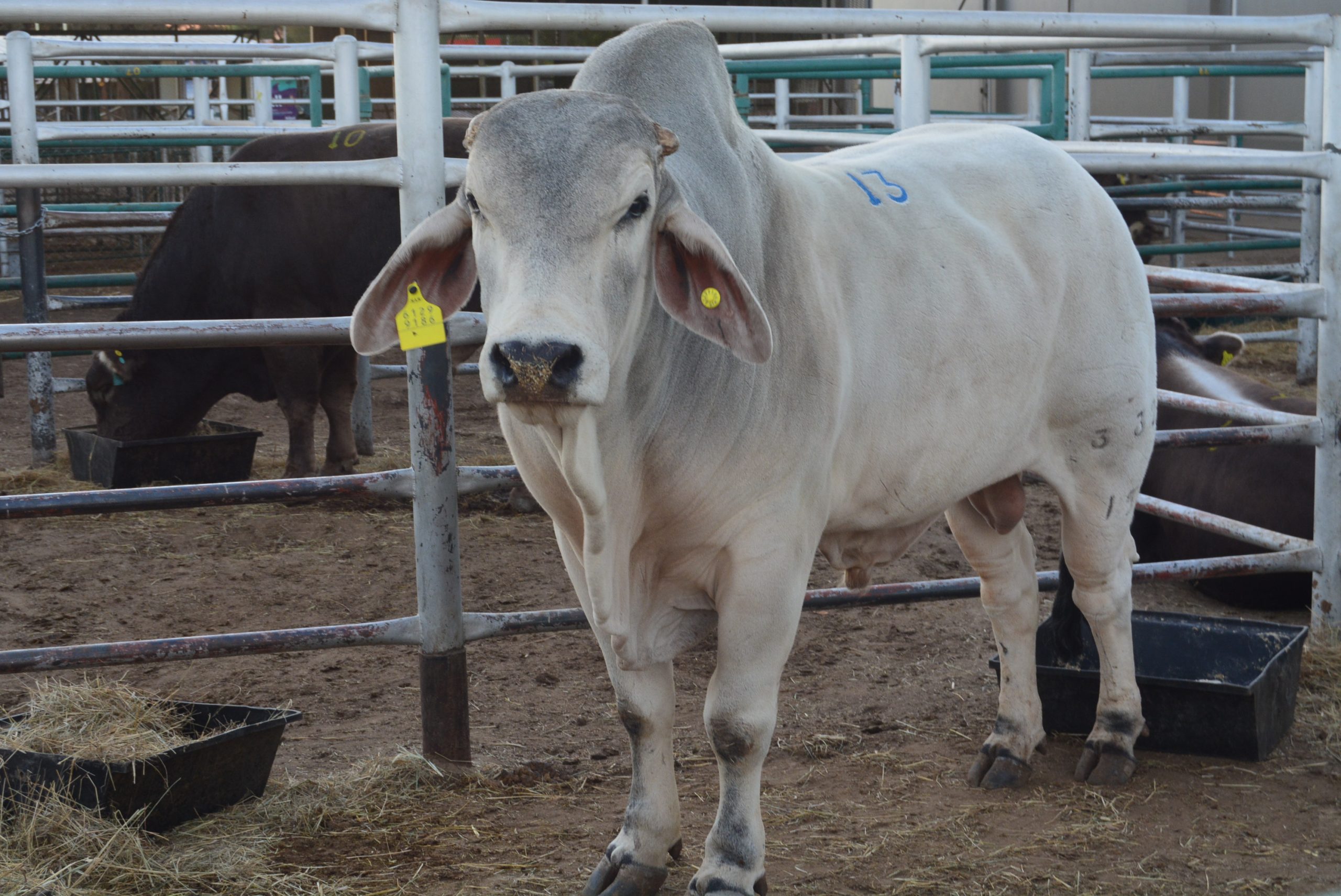The Brahman are known for their exceptional hardiness, physical stamina, the fact that they live twice as long as normally expected and their ability to profitably produce on marginal lands. History and records have it that, the first Brahmans were imported to the land of the brave in 1954 by the late Mr. Jurgen Cranz and his wife Vera, to their farm Isabis in the Windhoek district of Namibia. This was quickly followed by more imports by other breeders.
After sixty seven (67) years since the arrival of the Brahman, today many farmers across Namibia has selected the Brahman as their breed of choice because of the variety of characteristic traits that they possess.
Having a greater influence and known to play a critical role among the beef industry, this makes it one of the visible reason why many farmers have opted to farm with the Brahman. It have been recorded that approximately 70% of the national beef cattle population are Brahman infused or Brahman type cattle.
Cross-calves are sought after
As outlined by the Namibian Brahman Breeders Society, Brahman cross-calves are sought after and regularly achieve top prices at auctions. They are easy to either feed or grow out in the veld due to their efficient fodder conversion. They have the ability to easily reach marketability in terms of growth, carcass quality and high-yielding carcasses with the desired fat, which is a huge economic factor in their favour.
By 18 months to two years, crossbred steer will have grown into strong, robust individuals, rounded off well on the veld, ready for marketing. This is the pay off, because they weigh! At 2 to 2 and half years Brahman steer can still attain their prime A grade, because they shed their milk teeth a little later than other breeds, thereby qualifying for a premium.
Able to survive in harsh climatic weather conditions
Namibia is known to be a semi-arid country with harsh climatic weather conditions. With such difficult conditions, it puts cattle producers on the urge to select and farm with breeds that are able to survive and thrive where other types could not thrive. Again the Brahman makes it suitable to farm in the harsh Namibian environment due to their ability to adapt and at the same time withstanding vast climatic differences. With Namibian temperatures known to skyrocket, many farmers have opted to choose the Brahman breed as they are heat tolerant due to their dark skin pigmentation, which filters the intense rays of the sun. The breed is also known to have special feature of sweating freely, which contributes greatly to their heat tolerance. Their thick, glossy hair coat reflects much of the sun`s rays; in fact the abundance of loose skin increases the body surface area exposed to cooling.
Cows have great mothering abilities
Namibian farmers are exposed to predators such as leopard, spotted hyenas, cheetahs and jackals which sometimes have direct confrontation and conflict with farmers. As a result of this, many farmers have again opted to choose the Brahman as the females have great mothering abilities, protecting their young against all predators. Many breeders and livestock producers will attest to the extreme lengths to which they will go to protect their calves. The females are also known to have a lengthy productive life – the cows are recorded to calve when they are 15-20 years old.
Again as highlighted by the Namibian Brahman Breeders Society; due to their efficient mobility, Brahmans can cover great distances in search of grazing and water points. This is a huge plus factor in dry and extensive farming practices. In times of drought when it becomes necessary to move cattle over long distances, breeders have reported an amazement about the Brahman`s ability to walk.
New emerging farmers have also been recorded to farm with the Brahman, due to their ability to cross well with other breed type. Brahman also have the ability to reproduce on a regular basis in stressful environments and even in the most severe drought situations they survive with the lowest quantity and quality of fodder.




















